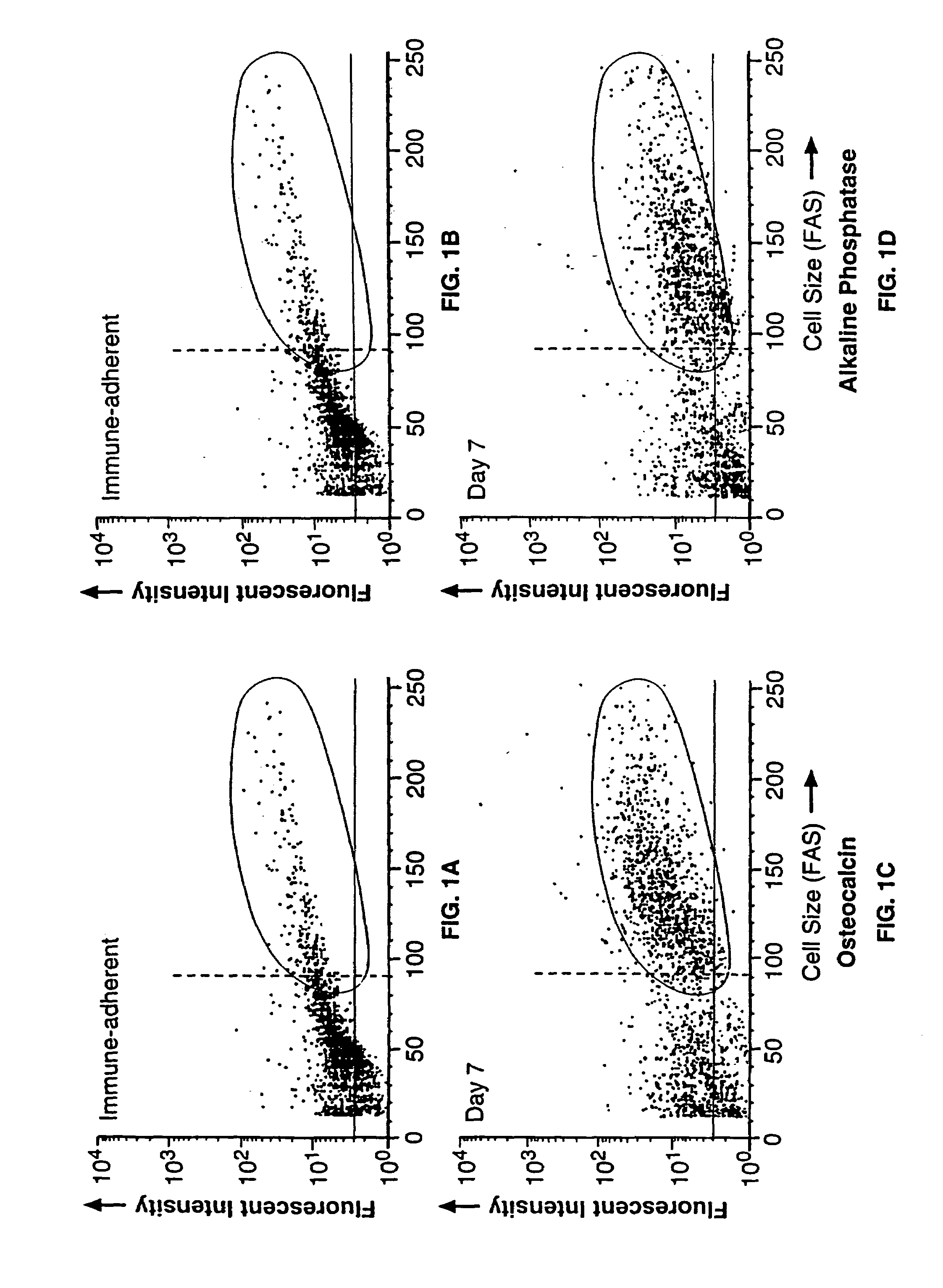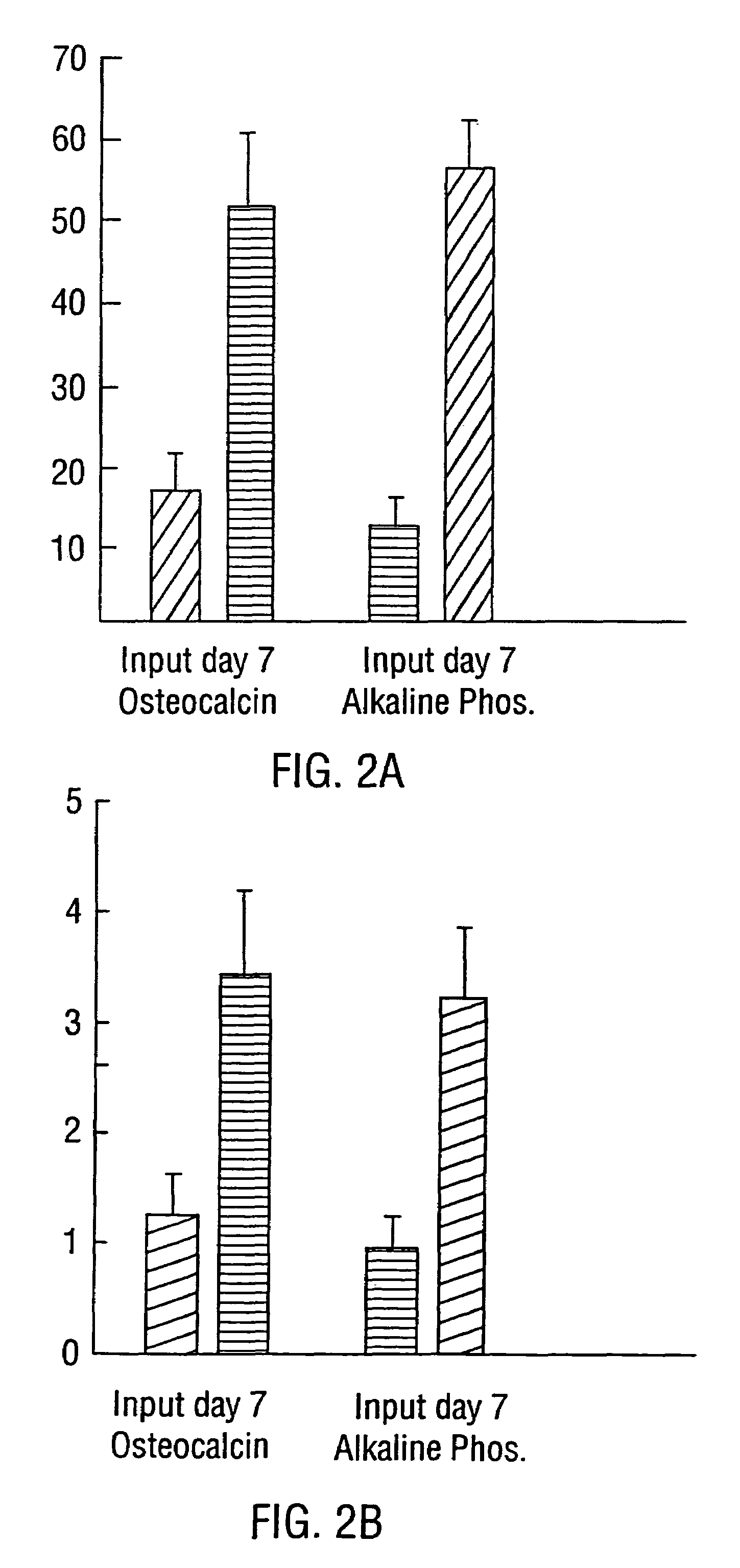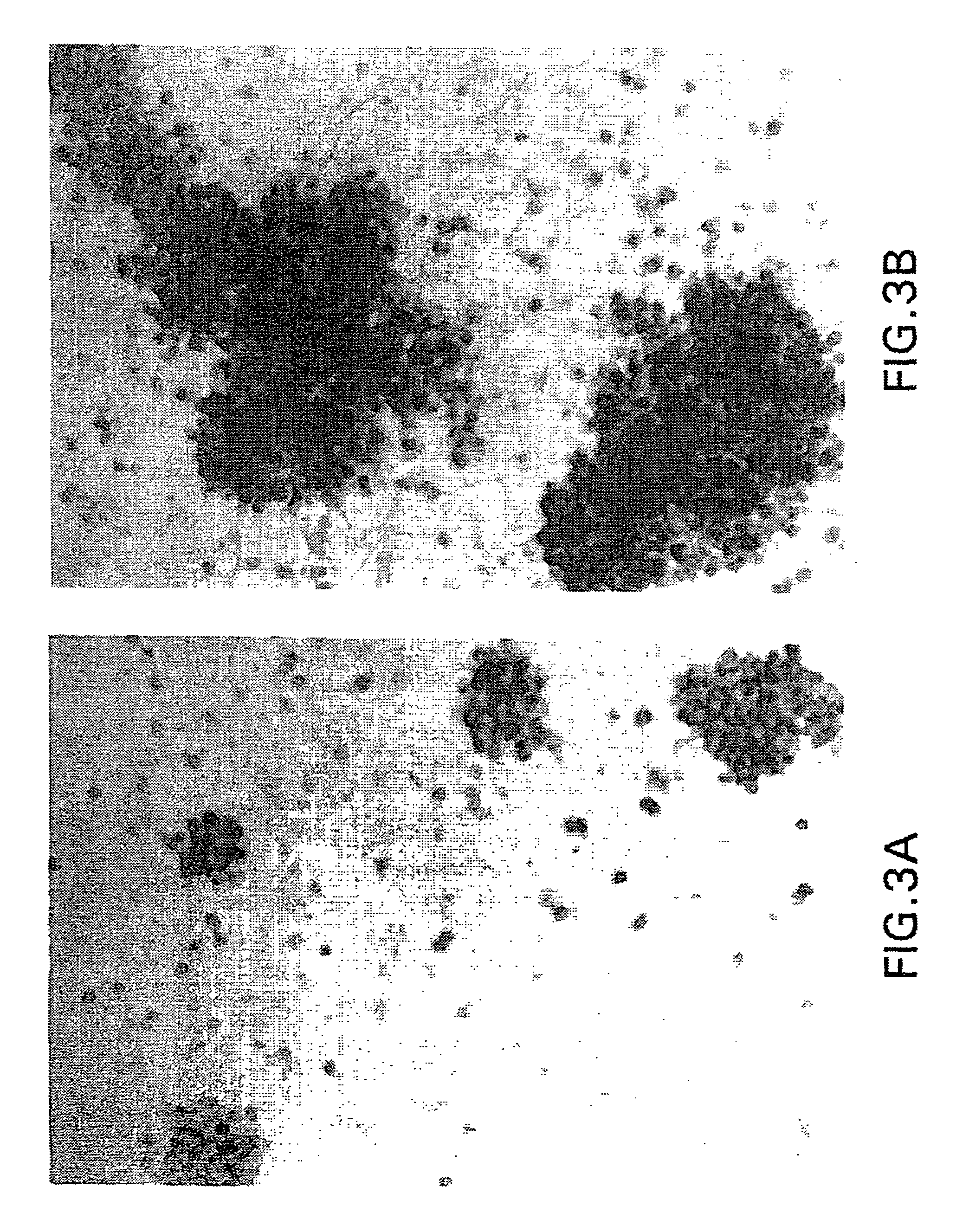Bone precursor cells: compositions and methods
a technology of bone precursor cells and compositions, applied in the direction of skeletal/connective tissue cells, artificial cell constructs, instruments, etc., can solve the problems of indirect cost (i.e., excluding income loss) of $17,000,000,600 per year, lack of proximity between the two bone ends, and inability to meet the needs of the bone end,
- Summary
- Abstract
- Description
- Claims
- Application Information
AI Technical Summary
Benefits of technology
Problems solved by technology
Method used
Image
Examples
example 1
Preparation of Bone Precursor Cells
[0162]Bone Marrow Cell Preparation and Culture. Human bone marrow aspirates were obtained from normal volunteers. Bone marrow cells were subjected to adherent cell depletion, and density separation techniques as previously described (Long et al., 1988). Briefly, non-adherent, low density (NALD) cells were prepared by first subjecting the cells to equilibrium-density centrifugation (Ficoll). The resultant mononuclear, low density cells next were subjected to two rounds of plastic adherence and these non-adherent, low density (NALD) cells then subjected to immune-adherence isolation (vide infra). Bone cells were cultured in supplemented McCoy's 5A media (Long et al., 1988) containing 1% ITS+ (Collaborative Research, Bedford, Mass.) as described previously (Long et al., 1990). Antibodies, Immune-Adherence, and Immunochemistry. The expression of bone protein antigens was determined by fluorescence activated flow cytometry, or by immunocytochemistry uti...
example 2
Alterations in Osteoprogenitor Cell Responsiveness to Osteogenic Cytokines During the Aging Process
[0183]The process of aging is associated with a progressive diminution of bone forming capacity, especially in trabecular bone (Roholl et al., 1994 and Nimni et al., 1993. This process is associated with a number of alterations in bone proteins, osteoid formation, calcium loss etc. leading to osteopenia. Central to all of this is the osteoblast. Reduction in osteoblast numbers of necessity leads to the loss of bone forming capacity. One potential mechanism for such a reduction in osteoblast numbers is a decreased responsiveness of the osteoprogenitor cells to mitogenic activation. As a result, a differentiation blockade may exist somewhere between the osteoprogenitor cell and the osteoblast. Such a blockade has been demonstrated in a rat model system, in which morphometric analysis indicated both a reduction in trabecular bone volume and a (morphological) ten-fold decrease in osteoblas...
example 3
Cellular Interactions During Osteoprogenitor Cell Proliferation and Differentiation, and how they are Modulated During Aging
[0189]As is true with other tissue types, bone cell development occurs in a specific microenvironment in which developing bone cells interact with each other, the extracellular matrix, and with matrix:cytokine complexes.
[0190]An important but poorly understood component of the osteogenic microenvironment is the extracellular matrix. As mentioned, bone extracellular-matrix contains both collagenous and non-collagenous proteins. When bone precursor cells are cultured on certain non-collagenous proteins, they show an increase in proliferation, and in bone cell antigen expression. Moreover, the inventors have shown, using the hematopoietic system as a model, that subpopulations of primitive progenitor cells require both a mitogenic cytokine and a specific extracellular matrix (ECM) molecule in order to proliferate (Long et al., 1992). Indeed, without this obligate ...
PUM
| Property | Measurement | Unit |
|---|---|---|
| density | aaaaa | aaaaa |
| density | aaaaa | aaaaa |
| diameter | aaaaa | aaaaa |
Abstract
Description
Claims
Application Information
 Login to View More
Login to View More - R&D
- Intellectual Property
- Life Sciences
- Materials
- Tech Scout
- Unparalleled Data Quality
- Higher Quality Content
- 60% Fewer Hallucinations
Browse by: Latest US Patents, China's latest patents, Technical Efficacy Thesaurus, Application Domain, Technology Topic, Popular Technical Reports.
© 2025 PatSnap. All rights reserved.Legal|Privacy policy|Modern Slavery Act Transparency Statement|Sitemap|About US| Contact US: help@patsnap.com



